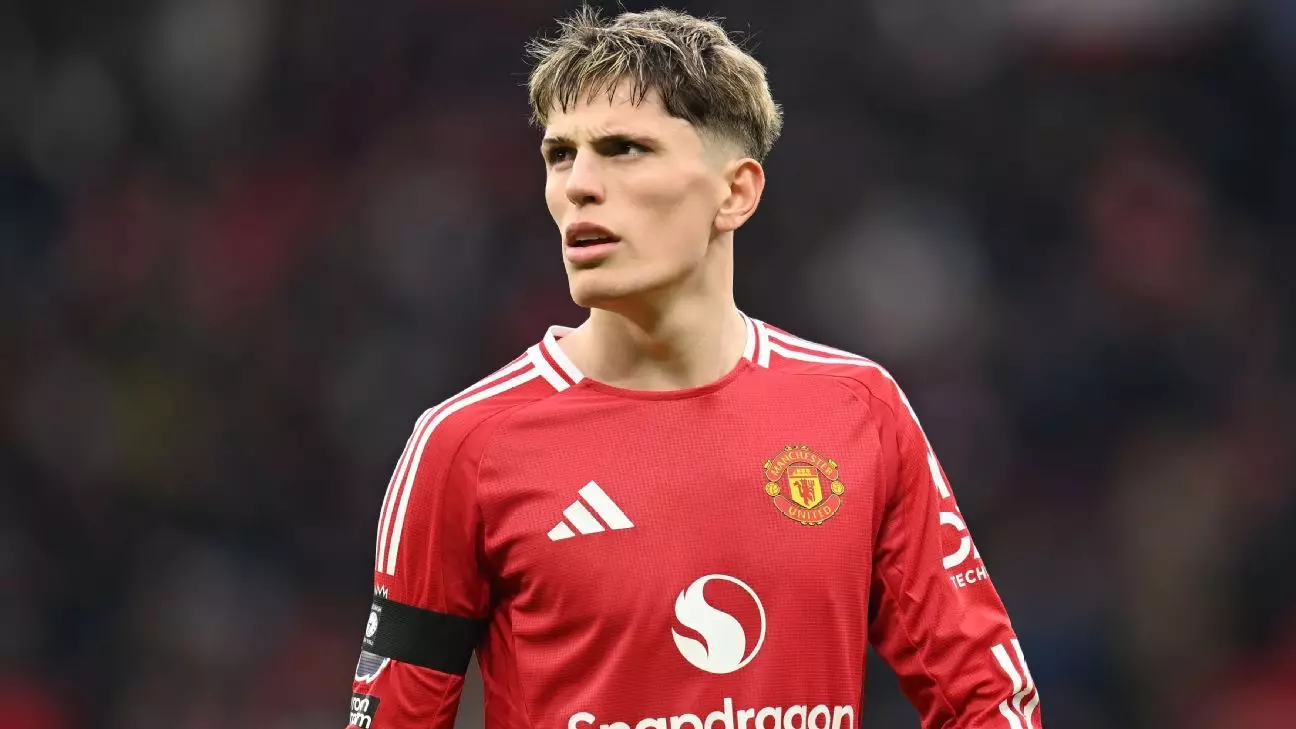In the competitive world of football, transfer windows often reveal the fraught balance between ambition and affordability. Recently, Napoli’s sporting director, Giovanni Manna, elaborated on the club’s attempts to bolster their squad by targeting young talents such as Alejandro Garnacho from Manchester United and Karim Adeyemi from Borussia Dortmund. Both players possess immense potential yet come with substantial financial implications that can influence a club like Napoli, which is currently sitting atop the Serie A standings.
Garnacho, a promising 20-year-old winger, was identified as a strategic addition to the Napoli roster, particularly following the departure of Khvicha Kvaratskhelia to Paris Saint-Germain for a significant fee. This loss created a pressing need for Napoli to reinforce their attacking options. However, Manna disclosed that while the club made a competitive offer to Manchester United, it was Garnacho’s financial expectations that ultimately thwarted the deal. This scenario underscores a vital issue in football today—the rising financial demands of younger players and how they tend to complicate what may initially appear to be straightforward negotiations.
Manna rightly pointed out that aligning Garnacho’s salary with those of existing players at Napoli would have created friction within the squad. This dilemma speaks volumes about the professionalism in transfer dealings—rarely are financial negotiations just business; they are also deeply intertwined with team morale and chemistry. Napoli’s commitment to sustaining its internal financial balance reflects a principle that is often overlooked in pursuit of star power.
Shifting to another prospect, Adeyemi’s situation further illustrates the complexities involved. Despite having a draft agreement with Borussia Dortmund, the young striker opted not to pursue a move to Napoli, showcasing a common challenge clubs encounter—players’ uncertainty regarding their future. Manna’s comments shed light on the importance of a player’s desire to join a particular club. In today’s football transfer market, a clear alignment of ambitions between the player and the club can sometimes be the decisive factor, transcending monetary concerns.
While Napoli is aiming for high-profile signings, the caliber of the players might not always match the club’s immediate objectives. It raises questions about the strategy behind targeting such players when there is uncertainty regarding their commitment. If a player is not wholly invested in a move, it can lead to a lack of performance and cohesion within the squad.
In a landscape where clubs constantly vie for top talent, Manna’s revealed strategies reflect a commitment not just to immediate improvement but to a long-term vision. The acquisition of Noah Okafor on loan from AC Milan illustrates Napoli’s willingness to adapt their strategy based on available resources and existing team dynamics rather than jumping at any marquee player who becomes available.
Ultimately, while Napoli’s pursuit of Garnacho and Adeyemi may not have come to fruition, the situation highlights critical factors that clubs must consider in the transfer market—financial status, player commitment, and internal harmony—all of which could have lasting impacts on a club’s success in the long run.

Leave a Reply